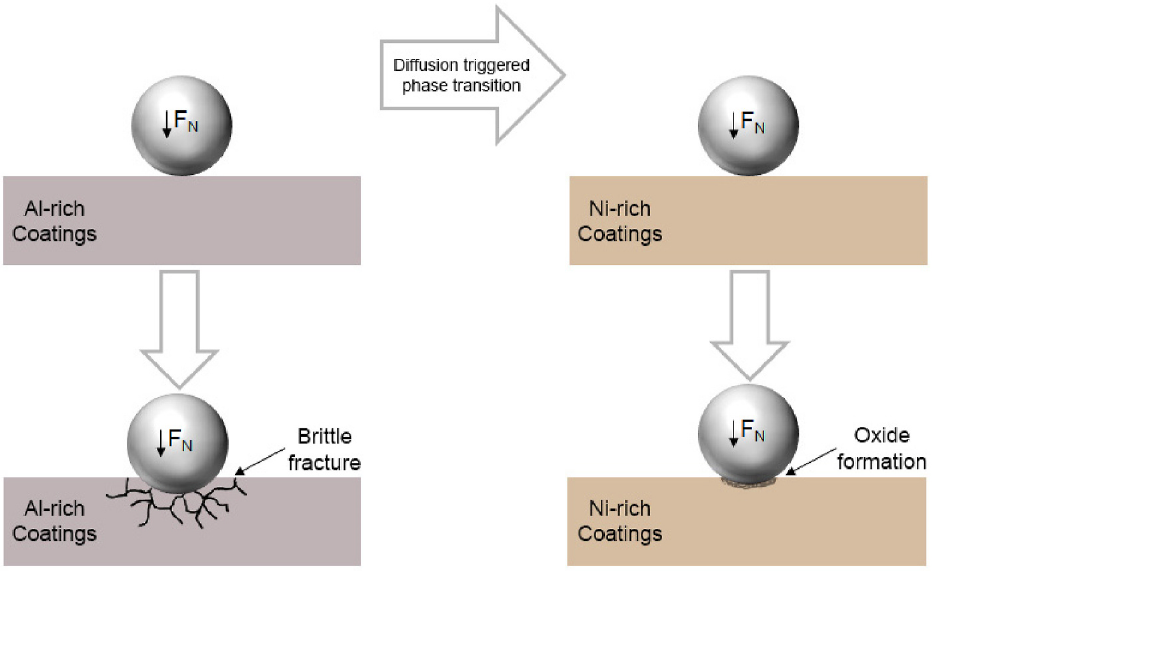C. Grimme, C. Oskay, L. Mengis, M.C. Galetz
Wear 477 (2021), 203850, DOI: 10.1016/j.wear.2021.203850

Nickel aluminide coatings with three different compositions, namely δ-Ni2Al3, Al-rich β-NiAl and Ni-rich β-NiAl were produced by chemical vapor deposition on pure nickel with successive diffusion heat treatments. The influence of the coating composition on the wear resistance is systematically studied and discussed based on the stability region of the δ-Ni2Al3 to the hypo-stoichiometric β-NiAl phase using a ball-on-disk setup up to 600 °C in air with alumina as the counterpart material. Wear resistance generally increased with decreasing Al contents of the coatings tested. Nanoindentation measurements showed that Young's moduli and hardness decreased for decreasing Al contents in the NiAl system. This change is accompanied with an increase in ductility, resulting in higher resistance against cracking of the coating, which is found to be the main wear mechanism for Al-rich coatings.